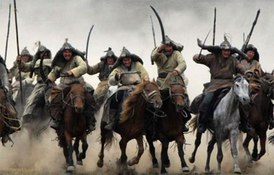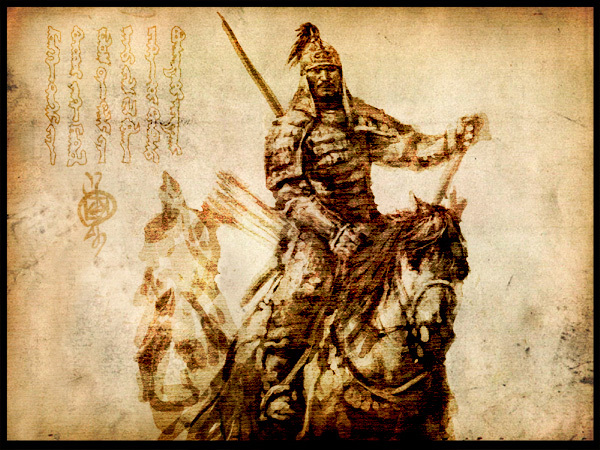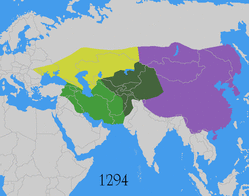CASE STUDY: THE MONGOLS
Peter Doucet
During the 13th century mankind was exposed to some of the most brutal warfare ever encountered. From the Steppes of Central Asia burst an explosion of bloodshed, violence, and brutality unmatched by any civilization that followed it. The Mongolian onslaught could not be stopped. Led by their fearless leader Genghis Khan, the Mongols would go on to create the largest empire, unmatched by any nation to this day. The Mongolian Empire was notorious for being extremely war like and brutal, to this end most of Mongolian contact with foreign nations began in bloodshed and always ended with Mongol dominance. At the apex of their power in 1279 C.E, the Mongolian Empire covered Eastern Europe, The Middle East, and nearly all of Asia . . . needless to say they came into contact with many different societies and civilizations. The most influential events occurred during battles or the unification of the global trade network. First off, during their various conquests the Mongols reestablished the Silk Road as well as other major trade routes and essentially reconnected the Eastern and Western worlds. This is extremely important because it brought about economic prosperity and allowed an explosion of innovation to overtake Europe. This would lead to Europe’s eventual dominance in technology and power because it opened the proverbial floodgates in terms of wealth, innovation, technology, and trade. Although it was not all beneficial to the world, with the expansion of the trade routes a silent killer was also unleashed upon the world. The Black Plague was quickly communicated along the major trading routes such as the Silk Road. This is important because a disease that was thought to be contained in Asia quickly spread to most of the known world and flourished in the heavily urbanized areas of Europe. The Bubonic Plague eventually went on to exterminate nearly 75 million people or roughly 30-60% of Europe’s population. The Mongolian Empire’s greatest accomplishments came in battle where their true ingenuity shined through. An example of this is the Battle of Caffa, during a Mongolian siege of the Italian port city; The Black Plague was decimating the Mongolian force while the Italians were safe behind their walls. In a last spiteful attempt to take the city, the Mongols launched the bodies of the infected over the wall in an attempt to infect the city. The Italians quickly disposed of the bodies by dumping them into the Mediterranean effectively poisoning their water supply. This led to the quick infection of the city population further spreading it through trade made possible by previous Mongol conquest. The importance of this siege cannot be understated, although it failed it would have lasting effects that still impact us to this day. The Siege of Caffa was one of the first documented uses of biological warfare. This aspect has continued into the modern era. From the Redcoats infecting blankets with smallpox during the Pontiac rebellions to mustard gas during World War I, biological warfare has been a contingency that all militaries after the 14th century had to account for. On a lighter note, .5% of all men on earth can call Genghis Khan their ancestor . . . that’s nearly 14 million men today. That’s an accomplishment in itself.



